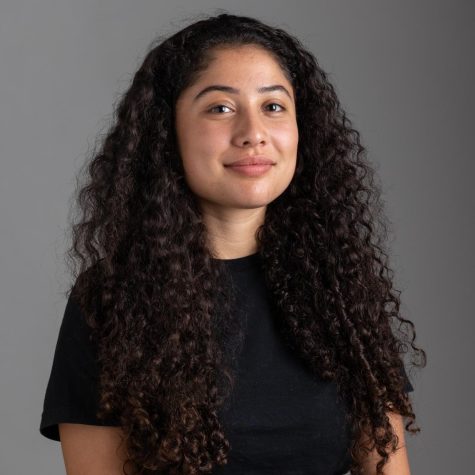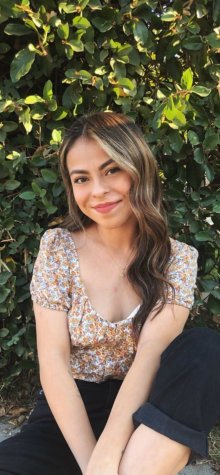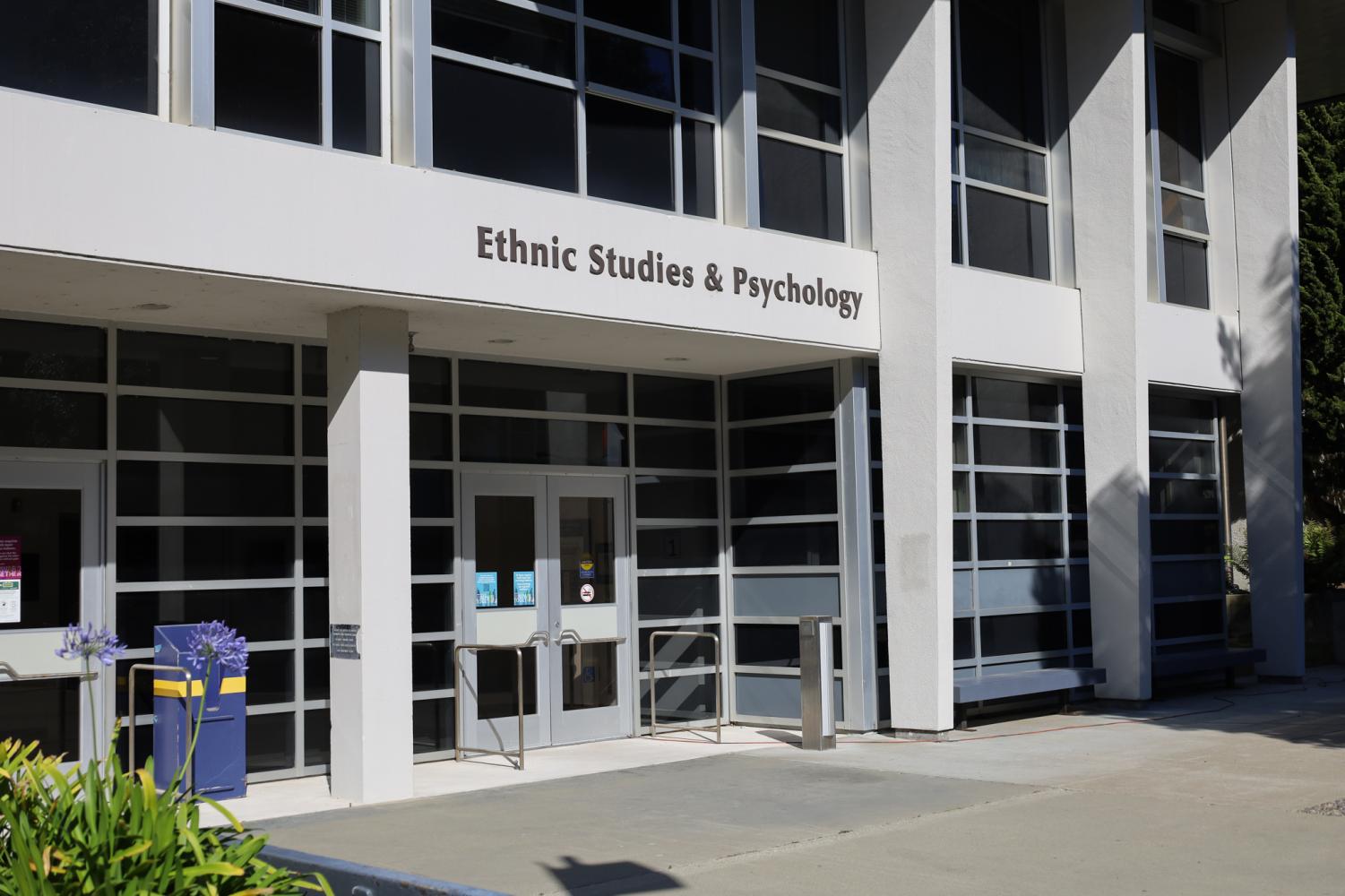



Only 67% of first year Black and Latino students enroll for a second year at SF State due to equity gaps, according to President Lynn Mahoney
Mar 1, 2022
SF State Junior Kylee Torres logs into her online classes amid screaming children and family members doing housework.
With all the commotion, it has become more and more difficult for Kylee to concentrate.
“In a normal classroom, I was able to learn without people screaming in the back,” Torres said. “It was tough to find a way to navigate it all, and in some ways I still haven’t figured it out.”
As a Latina student, this is just one of Torres’ struggles to continue her education. And according to President Lynn Mahoney these equity gaps are persistent across all CSU’s.
Equality-based classrooms focus on providing each student with the same opportunities for success. Whereas equity based classrooms address students’ individual learning impediments and strengths. And while SF State’s mission statement states that the school promotes equity, almost half of their Black and Latinx students still fail to graduate.
“Only 67% of Black and Latinx first-year students who started in Fall 2019 remained enrolled by Fall 2021—574 students are no longer at SFSU making progress toward their degrees,” Mahoney said in a school wide email.
According to the CSU Advisory Committee Report of July 2021, former CSU Chancellor Castro formed the Graduation Initiative 2025 Advisory Committee which includes faculty, students and staff as well as President Mahoney. It is the committee’s job to explore creative ways to not only maintain but to accelerate the CSU’s 2025 goals with special focus on eliminating equity gaps.
On Jan. 21, faculty, staff and students spoke about these inequities at SF State’s first annual All-University Retreat.
“We put together a kind of study of what’s one of the best practices in eliminating these equity gaps and we identified as a group of things we could do,” Mahoney said. “And we identified five of these areas along with the Chancellor’s office and now each campus has put together a plan for how to meet those”.
The plan divided the goals and priorities of diminishing these equity gaps into five parts: Targeting the percentage of students who take certain courses and receive a D, an F or withdraw; ensuring robust and directed academic advising for all students, expanding data sharing and campus-level data transparency through an equity lens, improving course availability and supporting student basic needs.
“Far too many Latinx and Black students are not graduating,” Mahoney said. “It’s unacceptable and I’m committed to reducing this equity gap.”
Targeting DFW courses with focus on equity
The CSU Advisory Committee report suggests that when students of color don’t pass a course in their first year, their chances of returning for a second year decreases.
“I have always thought that pretty much every student who walks away from an institution, it’s the institution’s fault,” Mahoney said. “The institution failed that student.”
The CSU’s will study classes that are frequently failed by Latin and African American students. With these findings, they will evaluate teaching methods and implement high impact practices.
Ensuring robust and directed academic advising for all students
The committee states that providing students with a clear pathway to meeting their educational goals contributes to improved graduation rates.
SF State’s current advising system is split into categories.
When students initially enroll, advising is split between first-year freshman and undeclared students. It is protocol for the under advisement counselor to email students their contact information and answer any of their questions.
“The ratio from students to staff is laughable and many students don’t get the opportunity to stick to one advisor who knows them and their background,” Torres said. “We must meet students where they’re at.”
Once students have declared their majors, they must refer to their specific college resource center for advisement. Returning students who have declared their major are required to schedule a readmission appointment with the college resource center associated with their major.
“I have only met with an advisor once and that was during my freshman year in 2019,” said Latinx SF State Junior Melany Martinez. “I feel like advising counselors are accessible by the student but it is the student that has to reach out.”
The committee aims to improve advising by offering equitable support such as digital academic planning tools, as well as in-person advising. They also plan to implement alert systems that notify students when they are at risk of deviating from their degree path. Advisors would then provide actionable suggestions for students to get back on track.
SF State’s advising website also offers video guides that provide students with information about advising, such as how to navigate through your student center as well as understanding GE requirements.
Expanding data sharing and campus-level data transparency through an equity lens
The CSU committee will use past student data to further address educational equity gaps within SF State.
The committee suggests that a “what works/ best practices” scenario informed by campus assessment and research findings maintained by the chancellor’s office is best to use.
“I didn’t know anything about this statistic and I believe it should be made more available to students so that they are aware of these equity gaps,” Martinez said. “These statistics seem low but can be improved on if everyone is aware of it.”
Course availability
“Advising is a big resource that students need but often can’t reach,” Torres said. “When planning which classes to take and enrolling in them, many students may not know where to start, especially when being first generation.”
The CSU will gather information about student needs and course demand for graduation after they build detailed college plans with their advisors.
“I feel the statistics are quite upsetting, however I’m not surprised,” said Latinx SF State Junior Azerette Cerecer. “I think that classes are great but it’s never promised.”
Supporting student basic needs
SF State’s Basic Needs Initiative focuses on improving food and housing insecurity. The committee plans to create a systemwide definition for what services are considered basic needs.
President Mahoney feels that students finding a community on campus is a basic need.
“I also think a lot of reasons sometimes we lose students is because they don’t have that sense of belonging, that sense of connectedness, and student groups are the single best way I think for students to get connected and to feel belonging,” Mahoney said.
On Jan. 31, SF State’s Alpha Phi Latinx sorority group responded to this issue at their first Latinx Literature night. They explained that having a place to be able to speak about their culture, such as their sorority, can help with their education.
“Most of us are first generation students and coming out to college, we need that sense of community,” said Mikeala Martinez, member of Alpha Phi. “We didn’t have Latino clubs on our campus before 1990 and now that we do, it is important for us to show up and represent ourselves as much as we can.”
The sorority group explained that activities such as engaging in Latinx literature and reading about their experiences can bring the Latinx community together while promoting academics.
“We need more financial aid counselors, academic advisors, more faculty who look like our students and come from similar backgrounds as our students,” Mahoney said. “We need more faculty development, probably more academic support.”

